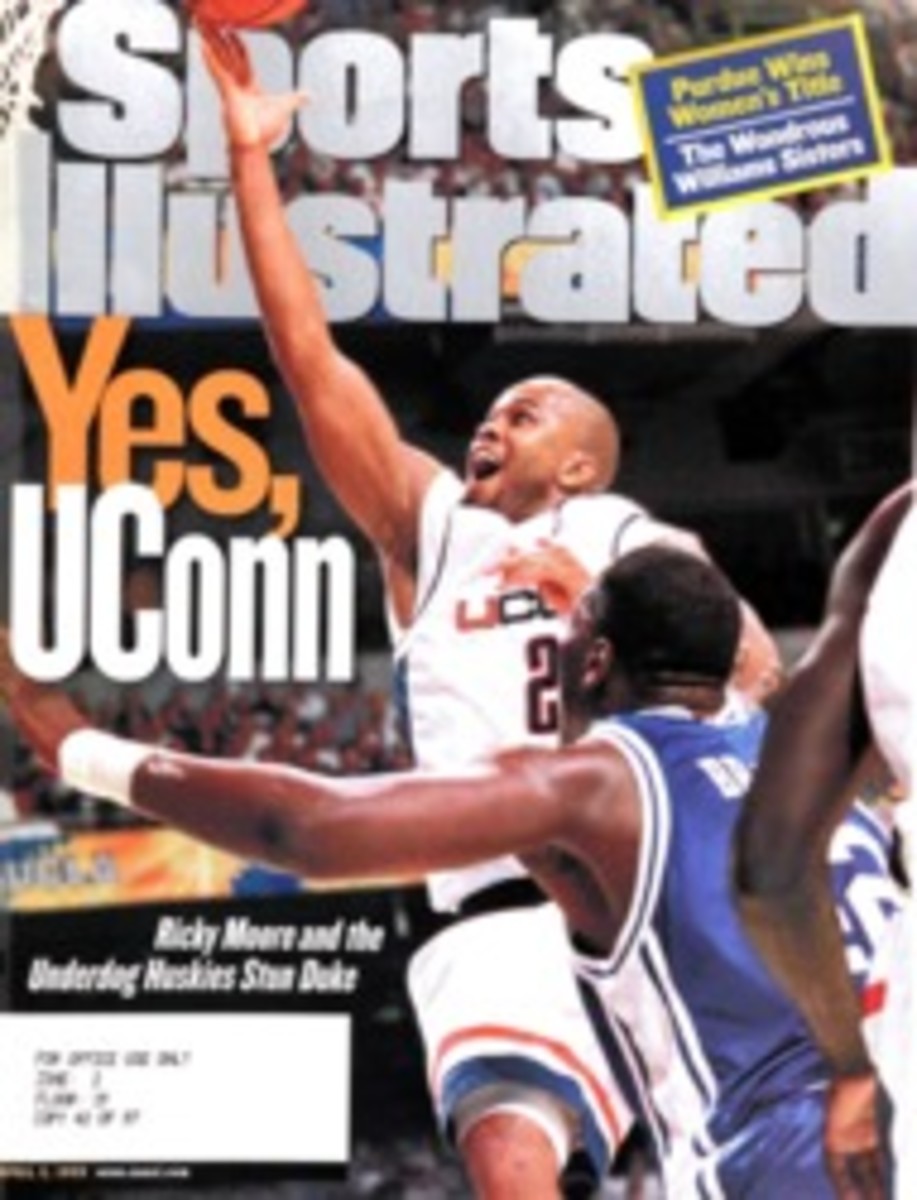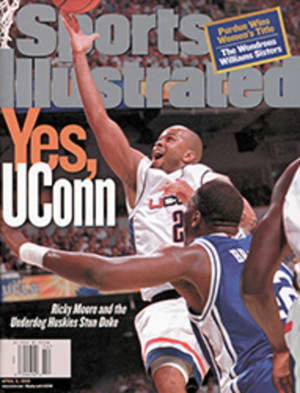
Indecent Overexposure Today's saturation TV sports coverage leaves nothing to a fan's imagination
Last week in this space I floated the crackbrained notion that
the supersizing of sports on television is rooted in a kind of
voodoo economics. That wall-to-wall programming, institutional
shortsightedness and personal greed have created an
athletic-industrial complex so bloated, top-heavy and unstable
that, like Anna Nicole Smith perched on a bar stool, it's only a
matter of time before everything hits the floor. But while this
makes for some bad corporate mojo, do any of us really care if
Disney or G.E. or Time Warner or Westinghouse lose what amounts
to sofa cushion money? After all, they'll just tack an extra
buck onto the price of every waffle iron or swimsuit calendar or
military jet engine they sell and go on as before.
The true cost of living in our 24-hour, 500-channel, Web-wired
SportsNation can't be calculated on a balance sheet. The
overexposure of more players in more games on more channels
doesn't come cheap. What's being lost, and lost irrevocably, is
what used to lie at the heart of our relationship with sports:
imagination. Without it, we can no longer really be fans, but
instead are reduced to viewers, passive consumers of the
interchangeable digital widgets that now constitute sports
infotainment.
The late Mr. DiMaggio became a household god in large part
because he was a product of our collective imagination. To
listen to the radio play-by-play as he camped under another
dying fly ball required a fan's active, imaginative
participation. Joe D played his career out mostly in the fan's
mind, not on a nightly highlight reel, and it was up to each fan
to conjure up the pictures. Like all mythological beings in the
time before television, from Babe Ruth to Joe Louis to Bobby
Jones, we created him--we imagined him--because we had to. To be
a fan back then was an act of faith and fantasy, and sports
were, ironically, far more interactive than anything Bill Gates
contrives for us now.
By contrast, Mark McGwire's herculean season already feels
shopworn, a show we've seen once too often, diminished somehow
by television's overfamiliar intrusions and its endless
repetitions. By the time his McDonald's commercials aired, there
was no room left anywhere for us to play a part in the
mythmaking of a 70-home-run year. Television had already leeched
the magic out of it.
Face it, you were a better fan when you saw 20 baseball games a
year rather than 200. When you hadn't yet been anesthetized by
the electronic stream of largely unremarkable athletes playing
seven nights a week in cities that you didn't even know had
franchises. Back before highlight shows sounded like open-mike
night at the Chuckle Hut. Back before anyone needed a Stuart
Scott decoder ring just to get the scores. Before teal or ocher
became plausible team colors; before Diamondbacks or Raptors
were viable team names. Before sports seasons blurred into a
Mobius strip of infinite, meaningless programming. But most of
all, you were a better fan back before your heroes came to you
off the rack, prefabricated by the culture of celebrity, the
latest and greatest striding to the first tee of his first
tournament already clutching a fistful of endorsement deals and
wearing the newest shoes, every moment of it manufactured by
television for television, athletics as an act of product
placement, and all of it as smoothly preprocessed and
forgettable as discount cheese.
As we stare into the next century, forever fingering the remote,
goggle-eyed and numb, our greatest act of imagination will be to
remember the time, now long gone, when sports seemed like
something that mattered.
COLOR ILLUSTRATION: DAN PICASSO

